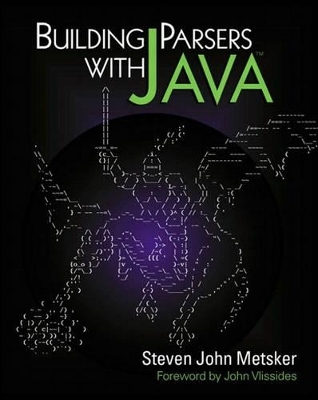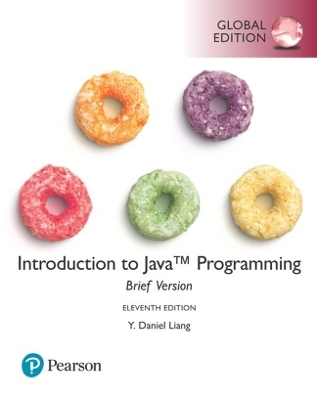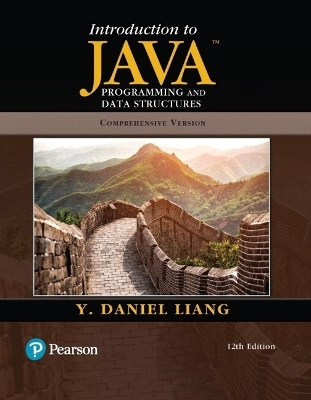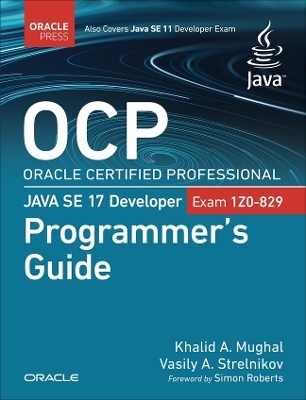
Building Parsers With Java™
Addison Wesley
978-0-201-71962-8 (ISBN)
- Titel ist leider vergriffen;
keine Neuauflage - Artikel merken
No programming language can solve every problem, but Java can be extended to solve a far wider range of problems through the use of parsers -- "mini-languages" that bridge the gap between humans and computers, and offer targeted solutions for specific problem domains. In Building Parsers with Java™, Steven John Metsker presents the first complete, start-to-finish guide to building parsers with Java. Metsker first explains what a parser is, introduces the building blocks of applied parsers, shows how to compose new parsers from existing ones; and walks step-by-step through designing, coding, and testing a working parser. Next, he presents in-depth coverage of creating Java-based parsers for a wide range of problem domains. You'll learn how to create parsers that can read elements of a data language; how to transform a grammar, ensuring the correct behavior of operators in a language; how to build arithmetic and regular expression parsers, and more. Metsker shows how to extend existing parser toolkits, and introduces a logic engine that can be used in a wide range of parsers, including both logic and query languages.
Steven John Metsker is a Managing Consultant with Dominion Digital, an information technology and business process reengineering company. Steve specializes in object-oriented techniques for creating clean, powerful software, and he is the author of Building Parsers with Java™, Design Patterns Java™ Workbook, and Design Patterns in C# (all from Addison-Wesley).
(NOTE: Each chapter concludes with a Summary.)
Foreword.
Preface.
Who Should Read This Book.
Using the Toolkit Code and the Sample Code.
Contents of the CD.
Applying the Code on the CD.
Hello World.
Coding Style.
Related Books.
Theoretical Context.
Yacc and Lex and Bison and Flex.
About the Cover.
Acknowledgments.
1. Introduction.
The Role of Parsers.
What Is a Language?
The Organization of This Book.
2. The Elements of a Parser.
What Is a Parser?
Parser Collaborations.
Assemblies.
The Assembly Class Interfaces.
Token and Character Assemblies.
Tokenizing.
Default and Custom Tokenization.
Assembly Appearance.
Assembly Summary.
The Parser Hierarchy.
The Composition of a Parser.
Terminal Parsers.
Using Terminals.
Word Terminals.
Num Terminals.
Literals.
Caseless Literals.
Symbols.
Quoted Strings.
Composite Parsers.
Repetition.
Alternation and Sequence.
Composing a Parser.
The Empty Parser.
Parser Summary.
Assemblers.
Parsers Use Assemblers.
Assemblers Work On Assemblies.
Elements Above.
3. Building a Parser.
Design Overview.
Deciding to Tokenize.
Designing Assemblers.
The Collaboration of Parsers, Assemblers, and Assemblies.
Using an Assembly's Stack.
Assemblers Plug In to Parser Composites.
A Language to Plug In To: Minimath.
Calculating a Minimath Result.
The Minimath Parser as an Object.
Building a Target.
Making a Target Cloneable.
Grammars: A Shorthand for Parsers.
Standard Grammar Shorthand.
Top-Down Grammar Design.
Example: Designing a Grammar for a Track Robot.
A Track Robot Grammar.
Checking for Left Recursion and Cycles.
Translating a Grammar to Code.
Translate Quoted Strings.
Translate Sequences.
Translate Alternations.
Translate Terminals.
Create a Subparser for Each Rule.
Option 1: Declare Each Subparser.
Option 2: Arrange Subparsers as Methods.
Add a Start Method.
Completing a Parser.
Control Pushing.
Design the Target.
Plug In Assemblers.
4. Testing a Parser.
Feature Testing.
Random Testing.
Ambiguity Testing.
Terminal Ambiguity.
Special Tokenizers and Targets.
5. Parsing Data Languages.
The Role of Data Languages.
A Data Language Example.
A Coffee Grammar.
A Tokenizing Problem.
Coffee Assemblers.
Coffee Assembler Code.
Translating the Coffee Grammar to Code.
Data Language Parser Summary.
Parsers with XML.
A Brief History of XML.
The Evolution of XML.
An XML Example.
Helpers.
ShowCoffeeXML.
6. Transforming a Grammar.
The Role of Grammar Transformation.
Ensuring Correct Associativity.
Eliminating Left Recursion.
An Algorithm.
Ensuring Proper Precedence.
Eliminating Parser Class Loops.
7. Parsing Arithmetic.
Building an Arithmetic Parser.
Conventional Symbols.
Conventional Precedence.
Conventional Associativity.
An Arithmetic Grammar.
Arithmetic Assemblers.
Assembler Code.
An Arithmetic Grammar Parser.
8. Parsing Regular Expressions.
The Role of Regular Expressions.
Building a Regular Expression Parser.
A Regular Expression Grammar.
Regular Expression Assemblers.
Assembler Code.
A Regular Expression Parser.
9. Advanced Tokenizing.
The Role of a Tokenizer.
Acquiring a Tokenizer.
Tokenizers in Standard Java.
A Token Class.
A Tokenizer Class.
Tokenizer Lookup Tables.
Tokenizer States.
QuoteState.
NumberState.
SlashState.
SymbolState.
WhitespaceState.
WordState.
Setting a Tokenizer's Source.
Customizing a Tokenizer.
The TokenStringSource Utility.
Customizing a State.
Changing Which State the Tokenizer Enters.
Adding a State.
Token Strings.
10. Matching Mechanics.
Introduction.
Parser Matching.
Repetition Matching.
Collection Parsers.
Sequence Matching.
Alternation Matching.
Empty Matching.
Terminal Matching.
Token Terminals.
Character Terminals.
Terminals Summary.
Parser Matching Utilities.
11. Extending the Parser Toolkit.
The Role of New Types of Parsers.
New Terminals.
New Token Types.
New Parser Features.
An Error-Handling Parser.
Tracks in Action.
12. Engines.
Engines versus Interpreters.
The Role of Engines.
Building Blocks.
Structures.
Variables.
Unification.
Facts.
Programs and Queries.
Proofs.
Backtracking.
Rules.
Additional Features of the Engine.
Comparisons.
Arithmetic.
Evaluation.
Not.
Anonymous Variables.
Lists.
13. Logic Programming.
The Role of Logic Languages.
Building Blocks.
Structures.
Variables.
A Logikus Interactive Development Environment.
Unification.
Comparisons.
Rules, Axioms, and Programs.
Proofs.
Variable Scope.
Variable Joins.
Backtracking.
Looping and Halting.
Gateways.
Additional Features of Logikus.
Comments.
Evaluations.
Negation.
Not Dangerous.
Anonymous Variables.
Lists.
Dot Notation.
List Applications.
Member.
Prefix.
Suffix.
Permutation.
Modeling Transitive and Symmetric Relations.
Symmetric Relations.
Example Applications.
An Authorization Program.
Epidemic.
Generate and Test.
Generate and Test in Java.
Altitude Bands.
14. Parsing a Logic Language.
Building a Logic Language Environment.
A Logikus Grammar.
Comments in Logikus.
Logikus Programs.
Logikus Assemblers.
The Logikus Interactive Development Environment.
A Facade for Logikus.
15. Parsing a Query Language.
The Role of Query Languages.
A Sample Database.
Facts, Objects, and Rows.
Jaql.
Jaql Syntax.
Jaql Joins.
Jaql Expressions.
Building a Query Language Environment.
Translating User Queries to Engine Queries.
Natural Joins.
Where Clauses.
Projection.
A Query Builder.
A Speller.
Jaql Grammar.
Creating the Jaql Parser.
Jaql Assemblers.
The Jaql User Environment.
Exception Handling.
Tracks.
Handling Abject Failure.
16. Parsing an Imperative Language.
The Role of Imperative Languages.
Sling.
Sling Programming.
A Basic Sling.
Adding Slings.
Plotting Time.
Line Effects.
Adding Lines.
Cartesian Plots.
Cartesians as Points.
Polar Plots.
For Loops.
Sliders.
A Composite Example.
More Plots.
The Elements of Sling>
Building the Sling Environment.
Building Commands.
A Command Example.
AssignmentCommand.
CommandSequence.
ForCommand.
IfCommand.
NullCommand.
PrintlnCommand.
ReadCommand.
WhileCommand.
Commands Summary.
Sling Commands.
AddFunctionCommand.
AssignFunctionCommand.
Building Runtime Functions.
Function Wrapping.
Umbrella Types.
Runtime Functions in Sling.
Execution Phases.
Prototyping.
Function Evaluation.
Sling Functions.
SlingFunction.
Abs, Ceil, Cos, Floor, Sin, and Tan.
Arithmetic.
Cartesian.
Point.
Polar.
Random.
Scale.
Sling.
Slider.
T.
Variable.
Sling Target.
A Sling Grammar.
Sling Assemblers.
AssignmentAssembler.
ForAssembler.
FunctionAssembler.
NegativeAssembler.
NumAssembler.
PiAssembler.
PlotAssembler.
ScaleAssembler.
SliderAssembler.
VariableAssembler.
A Sling Parser.
Reserved Words.
Assembler Placement.
17. Directions.
Get Started.
Get the Most Out of This Book.
Other Essential Reading.
Keep Going.
Create New Languages for Your Colleagues.
Create New Languages for Children.
Explore Languages as Human Interfaces.
Improve Languages as Receptacles for Human Thought.
Choose Your Own Direction.
Appendix A: UML Twice Distilled.
Classes.
Class Relationships.
Interfaces.
Objects.
References.
Index.
| Erscheint lt. Verlag | 20.4.2001 |
|---|---|
| Verlagsort | Boston |
| Sprache | englisch |
| Maße | 234 x 188 mm |
| Gewicht | 653 g |
| Themenwelt | Informatik ► Programmiersprachen / -werkzeuge ► Java |
| Mathematik / Informatik ► Informatik ► Web / Internet | |
| ISBN-10 | 0-201-71962-2 / 0201719622 |
| ISBN-13 | 978-0-201-71962-8 / 9780201719628 |
| Zustand | Neuware |
| Haben Sie eine Frage zum Produkt? |
aus dem Bereich


